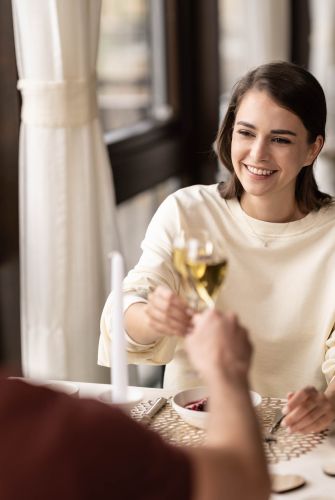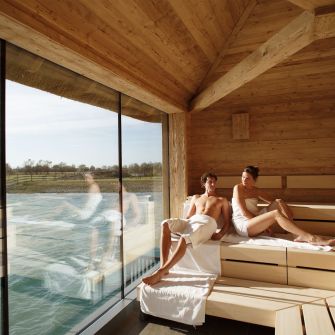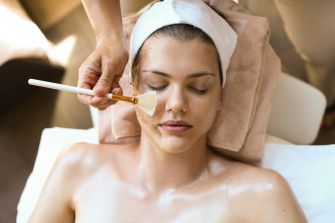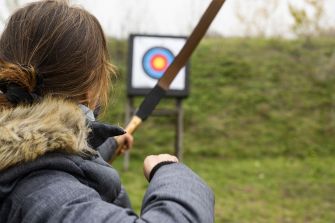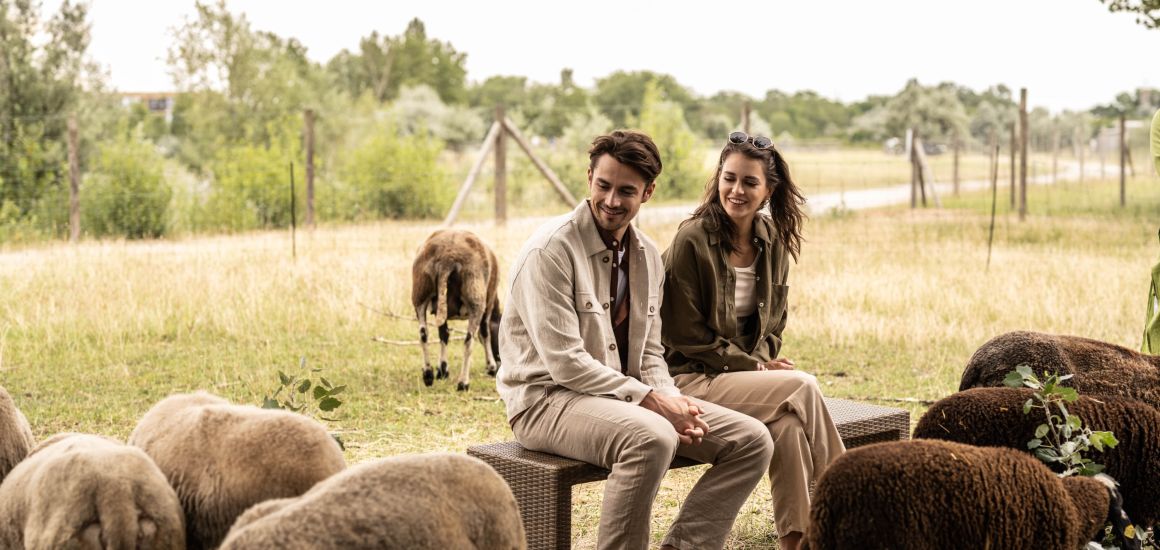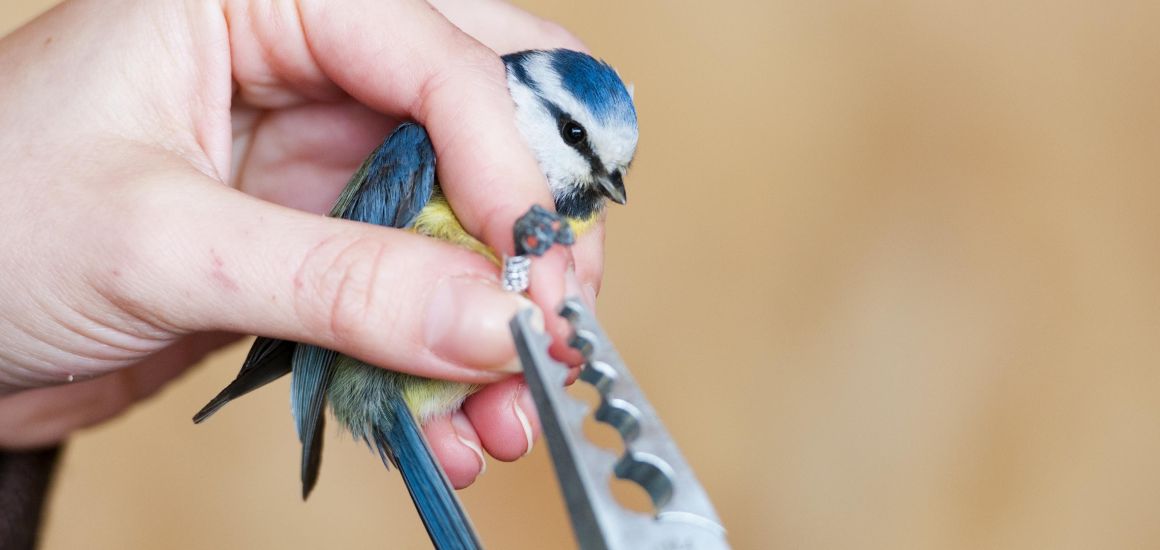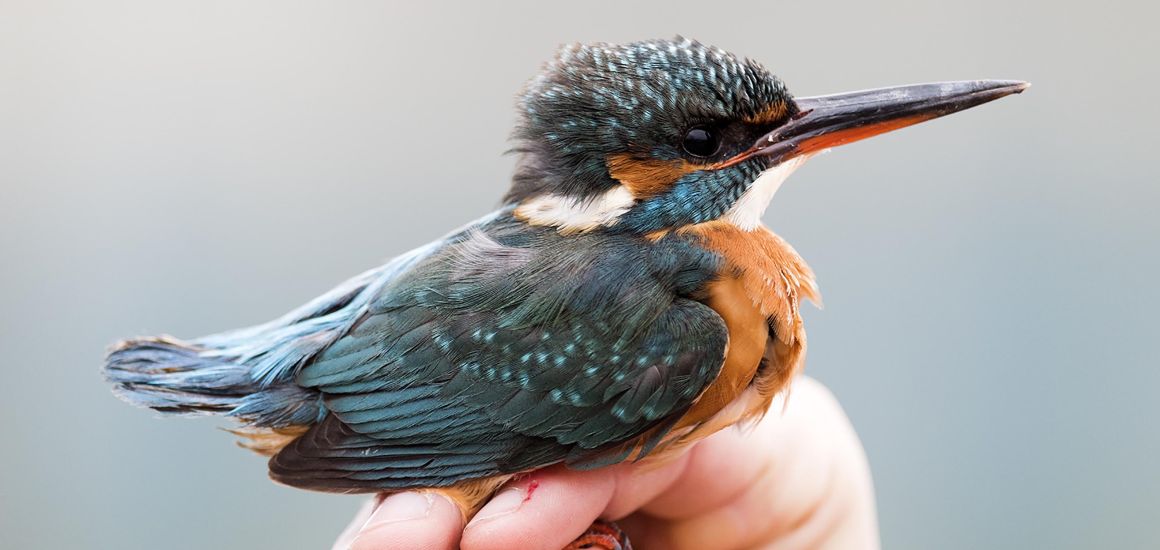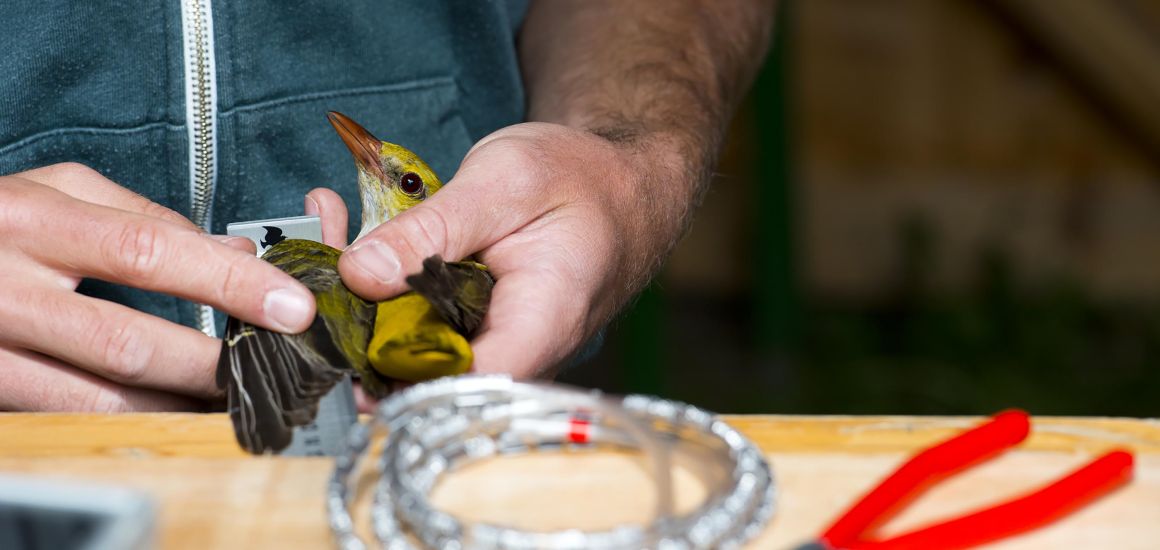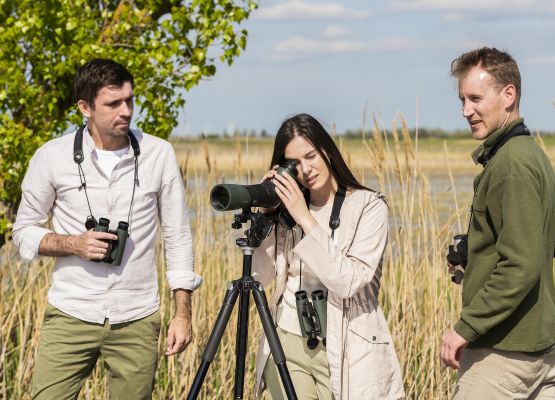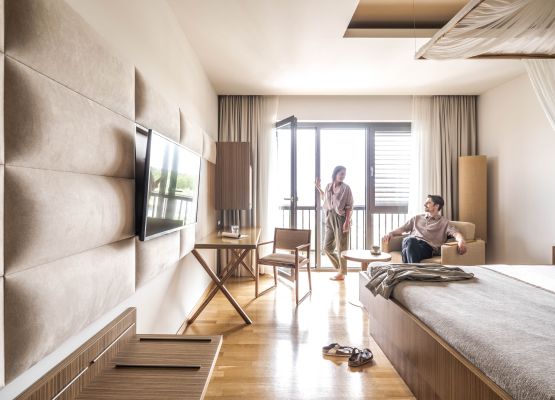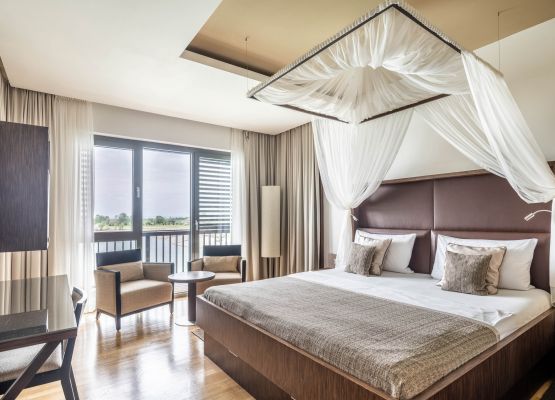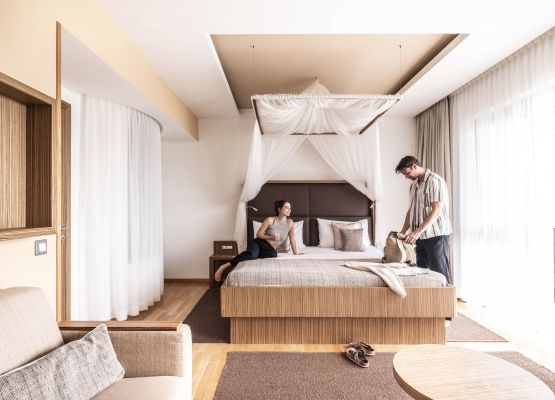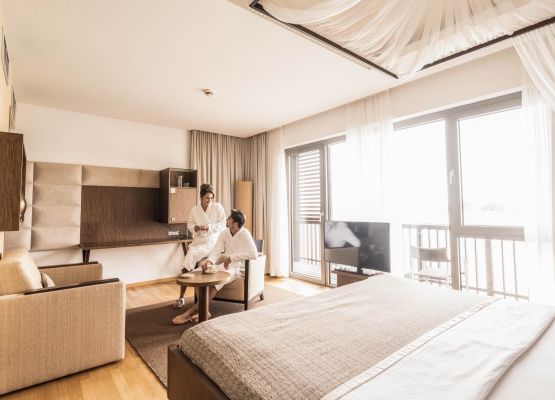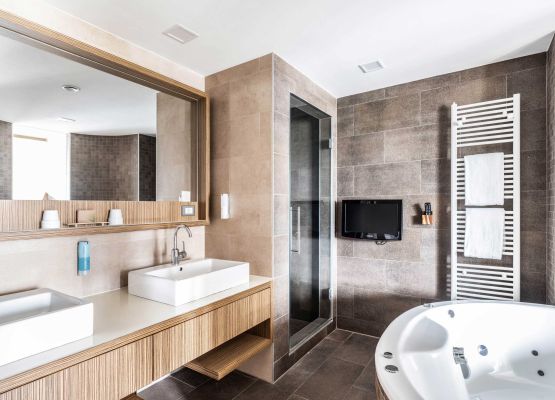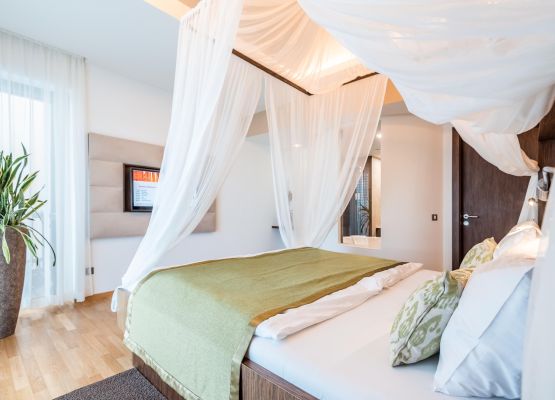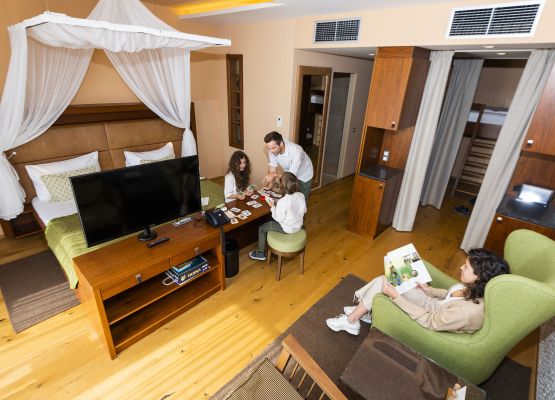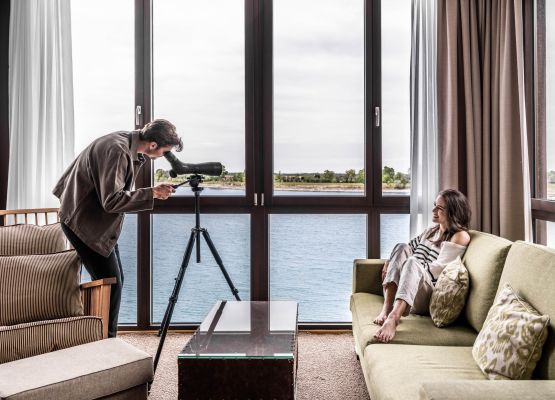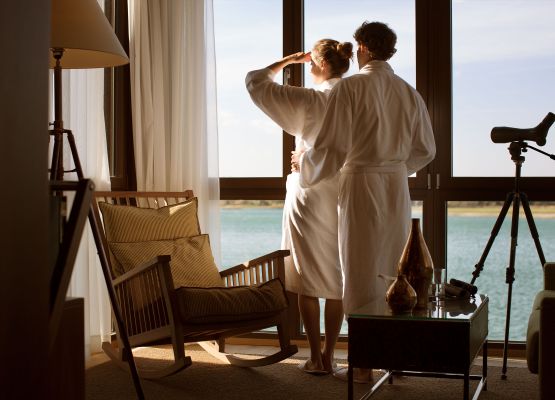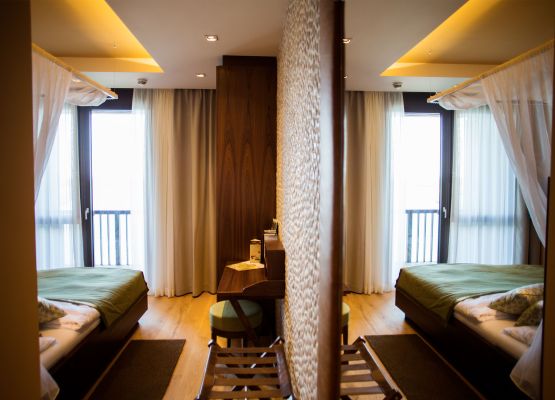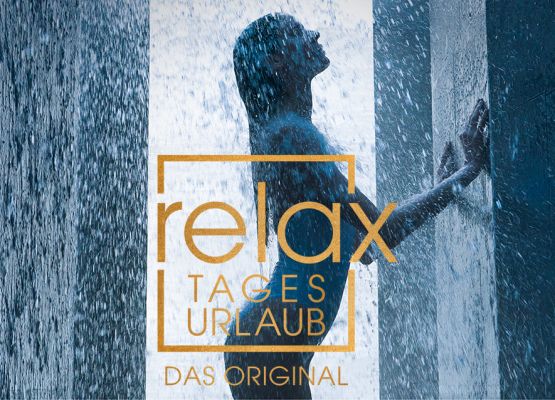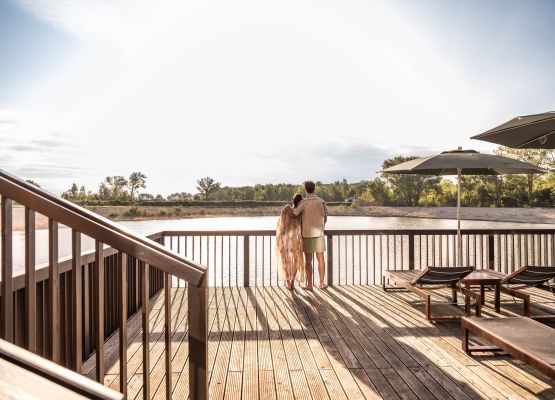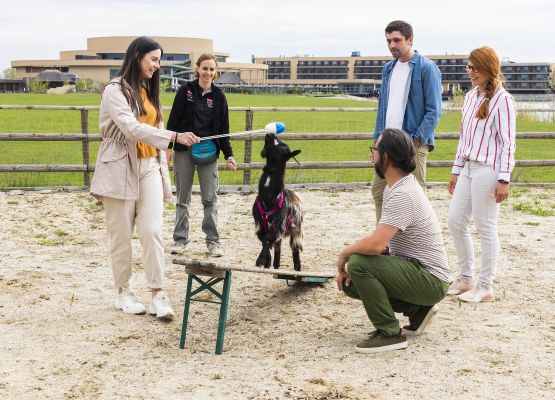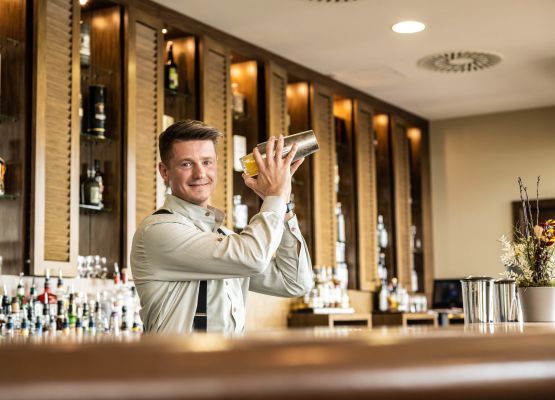No reservation required.
In harmony with nature
With a lot of passion, a part of the former salt pond - the Pimetz salt pond - was renaturalized on the St. Martins site and brought to "life".
In the center of the shallow water is an observation hide sunk into the ground: The St. Martins photo hide - unique in Austria!

We use the surplus thermal water to feed a wetland on our site, which is to develop into a salt marsh again under scientific supervision. Instead of discharging the water, it becomes a valuable habitat and serves as a habitat for a wide variety of aquatic life and rare birds such as black-winged stilts, lapwings and redshanks. From the unique photo hide, the inhabitants of the varnish can be observed and photographed at close range thanks to mirrored panes.






